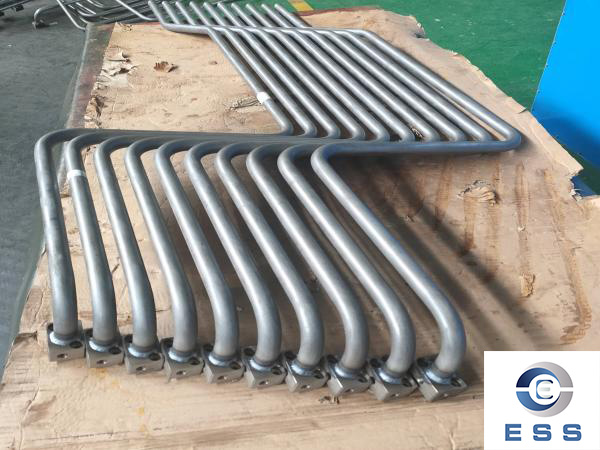Pressure grade of hydraulic tubes

Definition of hydraulic pipe pressure grade
The definition of pressure grade of hydraulic pipe refers to the highest pressure that the pipe can withstand, that is, the maximum working pressure it can withstand. Pipes used in hydraulic systems should meet certain mechanical properties and corrosion resistance. For different pressure levels, different pipe diameters and wall thicknesses should be selected to meet the working requirements of the hydraulic system. Generally speaking, the higher the pressure level of the hydraulic pipe, the greater the working pressure it will bear.
Hydraulic pipe material
The material of the hydraulic pipe is closely related to its pressure level. Generally speaking, the thicker the pipe wall, the higher the material used. Commonly used hydraulic pipe materials mainly include ordinary carbon steel, high-quality carbon steel, alloy steel, stainless steel, seamless steel pipe, etc.
Hydraulic pipe pressure grade classification
The pressure rating of a hydraulic pipe is mainly determined based on factors such as its wall thickness, pipe diameter and material. According to the international standard ISO12151-5:2007, the pressure levels of hydraulic pipes are mainly divided into the following levels:
1. M3K: Working pressure is 3250 PSI, burst pressure is 13000 PSI.
2. M4K: Working pressure is 4000 PSI, burst pressure is 16000 PSI.
3. M5K: Working pressure is 5000 PSI, burst pressure is 20000 PSI.
4. M6K: Working pressure is 6000 PSI, burst pressure is 24000 PSI.
5. M8K: Working pressure is 8000 PSI, burst pressure is 32000 PSI.
Common hydraulic pipe pressure levels are as follows:
1. It represents the maximum operating pressure of 8MPa and can be used for general pressure pipelines in oil circuits.
2. It represents the maximum operating pressure of 13.8MPa and is commonly used in medium pressure pipelines such as industrial equipment and agricultural machinery.
3. The maximum operating pressure is 20MPa, which can be used in high-pressure situations such as agricultural machinery and engineering machinery.
4. The maximum operating pressure is 31.5MPa, which is used in higher pressure hydraulic systems in construction, mining, metallurgy and other industries.
5. Represents the maximum operating pressure of 42MPa, the main pressure-bearing pipeline of the high-pressure hydraulic system.
The above are only common pressure levels. There are also hydraulic pipes with other pressure levels in actual applications.
Hydraulic pipe pressure level parameters
In addition to the above-mentioned working pressure and burst pressure, the pressure grade of hydraulic pipes also has the following parameters:
1. Wall thickness: The wall thickness of a hydraulic pipe is an important factor that directly determines the pipe's ability to withstand pressure. Different pressure levels require different wall thicknesses.
2. Material: The selection of hydraulic pipe materials should take into account environmental factors, such as humidity and temperature, as well as the working pressure and medium of the hydraulic system, so the corresponding materials should be selected.
3. Pipe diameter: The diameter of the hydraulic pipe has an important impact on the working efficiency and flow rate of the hydraulic system. A pipe diameter that is too small will limit the flow of liquid, thus affecting work efficiency.
Hydraulic pipe connection method
There are many ways to connect hydraulic pipes, the main ones are:
1. Disposable joint: This type of joint is generally suitable for the assembly of hydraulic systems. During installation, the thread ends need to be destroyed before they can be removed.
2. Non-destructible connector: This type of joint is easier to replace and repair than the destructible joint, and is suitable for equipment maintenance.
3. Flange connection: Flange connection can be installed and disassembled easily and quickly, but due to the small connection area, the bearing capacity is limited.
4. Welding: This connection method is suitable for large diameter pipes and high-pressure hydraulic systems.
In general, the pressure grade, material and connection method of hydraulic pipes are all very important components of the hydraulic system. In the hydraulic system, the quality and performance of the hydraulic pipe are directly related to the working effect and service life of the entire system. Therefore, when selecting hydraulic pipes, it is necessary to comprehensively consider the actual situation and select the appropriate hydraulic pipe product.
Precautions for operating hydraulic pipes
1. Carefully check whether the hydraulic pipe is damaged or deformed before work to avoid work interruption and safety accidents.
2. The hydraulic pipe must be installed firmly and reliably so that it will not be twisted or deformed by external forces, especially when connecting upstream and downstream pipes.
3. The selection of hydraulic pipe connectors must be reasonable to avoid loose pipe connections or leaks.
4. When using hydraulic pipes, care should be taken to avoid impact and extrusion, and to avoid bending and over-stretching during use.
Conclusion
The classification of pressure levels of hydraulic pipes and their related parameters are important contents that must be understood in the design and operation of hydraulic systems. Correct selection of factors such as pressure level, material, pipe diameter and wall thickness of hydraulic pipes can ensure the normal operation of the hydraulic system and avoid accidents.













 Eastern Steel Manufacturing Co.,Ltd not only improve product production and sales services, but also provide additional value-added services. As long as you need, we can complete your specific needs together.
Eastern Steel Manufacturing Co.,Ltd not only improve product production and sales services, but also provide additional value-added services. As long as you need, we can complete your specific needs together.










